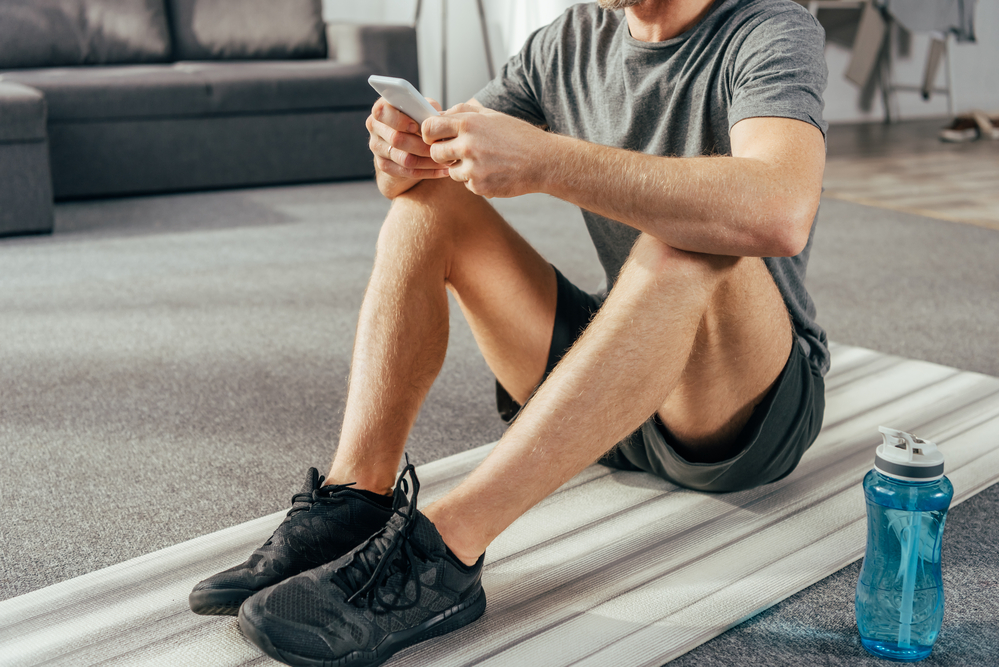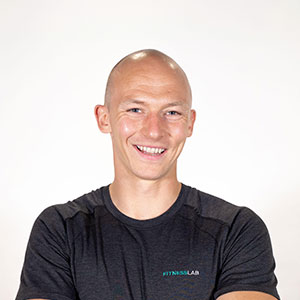This is part of our series of blogs on the posterior chain. In this blog, we’ll take a detailed look at the best posterior chain exercises at home and the technique needed to get each one right!
Why should you build posterior chain exercises into home workouts?
The posterior chain consists of the muscle groups located on the backside of the body. From your calf muscles all the way up to your upper back and neck muscles. The posterior chain has half of the body’s muscle mass, so strengthening these muscle groups is necessary for agility, better lower body strength, and stabilising the spine, hips, and knees.

A weak posterior chain can make you more likely to encounter physical injuries during day-to-day life so it is vital when training both in the gym and at home that posterior chain exercises are a main fixture in your programming.
Hip Thrust ISO Holds
Method
To start this exercise in the correct position, you need to be sat against a sofa, chair or table where the edge of it aligns with the bottom of your shoulder blades.
- Bend your knees up and place your feet flat on the ground.
- Keeping your chin tucked under (give yourself a double chin) and gaze forward, lift your hips up off the floor.
- Squeeze your glutes and keep your tailbone tucked under and hold this top position for 10 seconds.
- Relax all the way down to the floor and repeat up to 8 times.
Progressions
To make this exercise slightly harder you can either add some resistance in the form of a dumbbell/KB sat on your hips or a resistance band around your feet and hips. You can also progress up to single leg reps and then single leg ISO Holds.
Regressions
To regress this movement slightly and work on the correct movement patterning, bring yourself down to the floor into a normal glute bridge position. Work on holding in the top position but also coming back down to the floor a vertebra at a time.
By holding the isometric portion at the top of your hip thrusts you are increasing the time under tension, which is the golden ticket to muscle strength. The longer your muscles are under tension, the more they work and by eliminating any momentum this makes sure it is your muscles lifting and controlling the weight.
Prone Towel Pulldown
Method
- Start by lying face down on the floor with your legs straight and gripping the end of a towel with each hand, slightly wider than shoulder width apart. Make sure the towel is tight.
- Your arms will start in a Y position overhead and by contracting your back muscles, lifting your head slightly and pulling your elbow down towards your hips, they will come into a W position.
- The towel will touch your chest lightly and then return back to your Y position. Try not to let your elbows flair in the W position. Push them down to keep the contraction through the lats.
- Bracing throughout your core throughout the whole movement is key as well as not hyperextending through the lower back. A small lift off the floor keeping your gaze down is all that’s needed.
Progressions
To progress this exercise, you can either choose to increase the number of reps you do or increase time under tension by adding in an ISO hold in the W position.
Regressions
To regress this exercise and work on correct muscle activation and movement patterning you can do it seated. Start with the towel above your head, feet flat and shoulder width apart. You will need to pull the towel down just behind your head instead of in front in this seated position and pull the towel apart at all times. Work on not flaring the elbows out and keeping the back flat with little arch through the lower lumbar part of the spine. Return to your starting Y position and repeat.
Not everyone has a lat pulldown machine or a pull up bar at home but everyone has a towel. The resistance a towel creates is perfect enough to get some activation through the lats to maintain or increase strength when working out at home. The lats are the largest muscle in the posterior chain so maintaining or increasing strength in them is vital to preventing injuries, increasing power and control and also improving posture.
Rear Foot Elevated Hip Hinge
Method
To set up you will need to pop your back foot up onto a chair, sofa or table that is around knee height.
- The foot left on the floor should be flat and right underneath the body.
- Keeping all your weight in the leg that is on the floor, and with a slight forward lean but naturally arched back, drive your hips back into a hip hinge position.
- Pushing back through the crease of your hips and not bending from your waist, keeping your chin tucked under and spine in neutral, then driving up and through with the glutes back to your start position.
- You should feel this in the glutes and hamstrings of the leg on the floor. All movement should go backwards and not downwards as it is a hip dominant exercise, so posterior chain dominant.
Progressions
To progress this exercise you can either add a weight contralateral or ipsilateral or reduce the stability and take the back foot off of the support and work on Single Leg RDLs.
Regressions
To regress and work on the hip hinge movement pattern, you can either do body weight good mornings or 2 footed RDLS using a dowel or broomstick to help with the spine alignment throughout the movement.
No Equipment at Home?
No equipment, no problem! There are multiple ways we can continue to build strength and progressively overload when working out at home, even if we don’t have an abundance of equipment lying around. Increasing reps, decreasing rest periods and increasing time under tension are just a few ways we can continue to train effectively in a home environment.
Safety First
Remember, the movements and techniques you see demonstrated here are advanced exercises, and our team has practised them countless thousands of times. It’s always a good idea to have professional guidance when you’re exercising – and this is especially true when you’re using free weights.
If you’d like to talk to us about training with us here in London at our Soho, Fitzrovia, or Mayfair studios, we’d love to help. Equally, if you’re somewhere else in the world – we can be by your side virtually using our innovative online training app and video call guidance.

